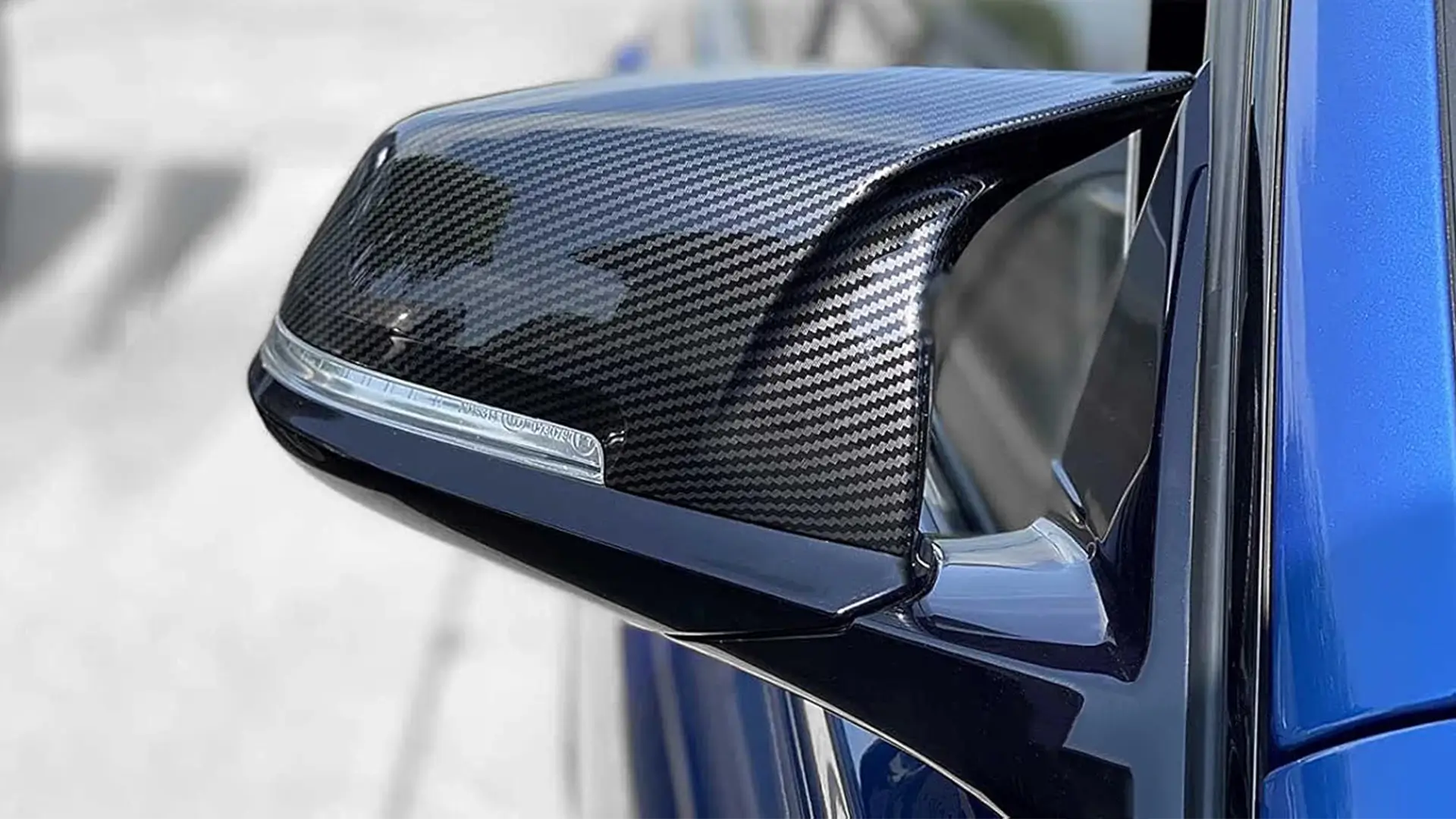Why Choose Carbon Fiber Hoods?
A carbon fiber hood offers significant advantages over traditional steel or aluminum hoods. Its superior strength-to-weight ratio reduces vehicle weight, improving acceleration, handling, and fuel efficiency. Additionally, carbon fiber auto hoods resist corrosion and provide a distinctive, high-tech appearance that elevates a vehicle’s aesthetic appeal. Whether you’re a premium automaker aiming for top-tier performance or an aftermarket brand seeking affordable customization. Selecting the right manufacturing process for carbon fiber hoods is critical to meeting your goals.
At Alizn, we understand that different brands have unique priorities. Some prioritize uncompromising quality and precision, while others focus on balancing performance with cost. Below, we detail three manufacturing methods—autoclave, resin transfer molding (RTM), and hand layup with vacuum bagging. Tailored to high-end, mid-range, and entry-level carbon fiber hood production, respectively. Each method is carefully chosen to suit the needs of automotive hoods, ensuring optimal performance and quality for your target market.
High-End Manufacturing: Autoclave Process for Premium Carbon Fiber Hoods
Overview of the Autoclave Process
The autoclave process is the gold standard for producing high-end carbon fiber hoods. Commonly used in aerospace and premium automotive applications due to its ability to deliver exceptional quality and performance. This method involves using prepreg carbon fiber—carbon fiber sheets pre-impregnated with resin—and curing them under controlled heat and pressure in an autoclave, a specialized pressure vessel.
Step-by-Step Process
- Mold Preparation: A precision-engineered mold, typically made from aluminum or composite materials, is prepared to match the exact dimensions of the carbon fiber car hood. The mold is treated with a release agent to ensure easy part removal after curing.
- Prepreg Layup: Skilled technicians manually lay prepreg carbon fiber sheets onto the mold, carefully aligning the fibers to optimize strength and aesthetics. Multiple layers are stacked in specific orientations (e.g., 0°/90°) to achieve the desired mechanical properties.
- Vacuum Bagging: The layup is sealed in a vacuum bag with breather and bleeder materials to remove air and excess resin during curing. This ensures a high fiber-to-resin ratio, typically around 60–70%, for maximum strength.
- Autoclave Curing: The mold and layup are placed in an autoclave, where high pressure (50–200 psi) and temperature (up to 135°C) are applied for a precise curing cycle, often lasting 2–3 hours. This process consolidates the laminate, minimizes voids, and enhances mechanical properties.
- Demolding and Finishing: After curing, the carbon fiber hood is removed from the mold, trimmed, and finished with processes like sanding, polishing, or applying a clear coat to achieve a glossy, high-quality surface.
Advantages of the Autoclave Process
- Superior Quality: The autoclave process produces carbon fiber hoods with minimal voids, high dimensional accuracy, and excellent mechanical strength, ideal for luxury and high-performance vehicles.
- Consistency: Automated pressure and temperature controls ensure repeatable, high-quality results, critical for premium brands.
- Aesthetic Excellence: The process delivers a flawless surface finish, showcasing the iconic carbon fiber weave pattern that appeals to high-end markets.
Best Applications
The autoclave process is ideal for premium carbon fiber hoods used in luxury sports cars, supercars, and aerospace-inspired automotive designs. Brands targeting high-end customers who prioritize performance, durability, and aesthetics. Such as those producing limited-edition vehicles or racing models—benefit most from this method. For example, a carbon fiber auto hood manufactured via autoclave can reduce weight by up to 50% compared to a steel hood while maintaining structural integrity under extreme conditions.
Considerations
While the autoclave process delivers unmatched quality, it is capital-intensive and time-consuming, resulting in higher costs. Customers should weigh the premium price against the need for top-tier performance and brand prestige. For those seeking the highest quality carbon fiber hood, this method is unmatched, as detailed in our autoclave production line guide.
Mid-Range Manufacturing: Resin Transfer Molding (RTM) for Balanced Performance
Overview of the RTM Process
Resin Transfer Molding (RTM) is a mid-range manufacturing method that strikes a balance between quality and cost. Making it suitable for performance vehicles and mid-tier automotive brands. RTM uses a closed-mold system to inject resin into dry carbon fiber. Offering better control than entry-level methods while being more cost-effective than autoclave processing.
Step-by-Step Process
- Mold Preparation: A two-part mold (male and female) is created, typically from metal or composite materials, to form the precise shape of the carbon fiber hood. The mold is coated with a release agent.
- Dry Fiber Placement: Dry carbon fiber fabric is cut and placed into the mold, with fiber orientations tailored to the hood’s structural requirements.
- Resin Injection: The mold is closed, and resin is injected under pressure through strategically placed ports, saturating the carbon fiber. Vacuum assistance (VARTM) may be used to enhance resin flow and reduce voids.
- Curing: The mold is heated (typically 250°F–400°F) to cure the resin, forming a solid composite. The curing time is shorter than autoclave processing, often 30–60 minutes.
- Demolding and Finishing: The cured carbon fiber car hood is removed, trimmed, and finished with sanding, painting, or clear coating to achieve the desired appearance.
Advantages of the RTM Process
- Cost-Effective Quality: RTM offers high-quality carbon fiber hoods at a lower cost than autoclave processing, making it accessible for mid-range brands.
- Scalability: The process is suitable for medium-volume production, ideal for performance car manufacturers or aftermarket suppliers.
- Good Mechanical Properties: RTM produces hoods with a high fiber-to-resin ratio and low void content, ensuring durability and strength.
Best Applications
RTM is perfect for mid-range carbon fiber hoods used in performance vehicles. Such as sports cars or aftermarket upgrades for enthusiasts. It suits brands that want to offer high-quality carbon fiber auto hoods without the premium cost of autoclave processing. For instance, RTM can produce hoods for models like the Ford Mustang or BMW M-series. Where weight reduction and aesthetics are important but cost is a consideration. Learn more about this method in our RTM production line overview.
Considerations
RTM requires investment in molds and equipment, which may increase initial costs compared to entry-level methods. However, its efficiency and quality make it a versatile choice for brands targeting performance-oriented customers who value a balance of cost and quality.
Entry-Level Manufacturing: Hand Layup and Vacuum Bagging for Cost-Effective Solutions
Overview of Hand Layup and Vacuum Bagging
Hand layup combined with vacuum bagging is an entry-level method for producing carbon fiber hoods. Widely used in the aftermarket and modification markets. This process involves manually applying carbon fiber and resin to a mold. Followed by vacuum bagging to consolidate the laminate, offering a cost-effective solution for smaller-scale production.
Step-by-Step Process
- Mold Preparation: A single-sided mold, often made from fiberglass or aluminum, is prepared with a release agent and optional gel coat for a smooth finish.
- Hand Layup: Dry carbon fiber fabric is laid onto the mold, and liquid resin (typically epoxy) is applied using brushes or rollers. Technicians carefully layer the fabric to achieve the desired thickness and strength.
- Vacuum Bagging: A vacuum bag is placed over the layup, along with peel ply and breather materials, to remove air and excess resin. A vacuum pump applies pressure (around 20% of full vacuum) to consolidate the laminate.
- Curing: The part cures at room temperature or in an oven at low temperatures (e.g., 120°F–150°F) for 1–2 hours, depending on the resin system.
- Demolding and Finishing: The carbon fiber hood is removed, trimmed, and finished with sanding, polishing, or coating to enhance its appearance.
Advantages of Hand Layup and Vacuum Bagging
- Low Cost: This method requires minimal equipment and tooling, making it affordable for small-scale production or custom projects.
- Flexibility: Hand layup allows for experimentation with various carbon fiber weaves, such as plain or twill, and hybrid materials like carbon/Kevlar, as noted in our hand layup and vacuum bagging guide.
- Accessibility: Ideal for aftermarket modders or small businesses entering the carbon fiber market without significant investment.
Best Applications
This method is best suited for entry-level carbon fiber hoods aimed at aftermarket modifications or budget-conscious consumers. It’s ideal for custom projects, such as hoods for modified street cars or low-volume production for enthusiast markets. For example, a carbon fiber car hood produced via hand layup can replace a heavier stock hood on a Honda Civic or Toyota Supra, offering weight savings at a lower price point.
Considerations
Hand layup and vacuum bagging are labor-intensive and rely heavily on operator skill, which can lead to inconsistencies in quality. The process may result in higher void content or less precise fiber alignment compared to RTM or autoclave methods, making it less suitable for high-performance applications.
Comparing Manufacturing Methods for Carbon Fiber Hoods
To help you choose the right production method for your carbon fiber hood. The following table summarizes the key characteristics of each method:
| Method | Quality Level | Cost | Production Volume | Applications | Key Benefits |
|---|---|---|---|---|---|
| Autoclave Process | High-End | High | Low to Medium | Luxury cars, supercars, aerospace | Superior strength, flawless finish, consistency |
| Resin Transfer Molding (RTM) | Mid-Range | Moderate | Medium to High | Performance cars, aftermarket upgrades | Balanced cost and quality, scalable |
| Hand Layup & Vacuum Bagging | Entry-Level | Low | Low to Medium | Aftermarket modifications, custom projects | Cost-effective, flexible, accessible |
Choosing the Right Method for Your Brand
- High-End Brands: If your brand targets luxury or high-performance markets, the autoclave process is the best choice for producing premium carbon fiber hoods. Its superior quality and aesthetic appeal align with the expectations of customers seeking top-tier products, such as those for Porsche or Lamborghini models.
- Mid-Range Brands: For brands focusing on performance vehicles or aftermarket parts. RTM offers a cost-effective solution without compromising significantly on quality. It’s ideal for producing carbon fiber auto hoods for mid-tier sports cars or enthusiast-driven upgrades.
- Entry-Level or Aftermarket Brands: If you’re targeting budget-conscious consumers or the aftermarket modification market, hand layup and vacuum bagging provide an affordable entry point. This method suits small businesses or custom shops producing carbon fiber car hoods for grassroots enthusiasts.
Key Considerations for Choosing a Carbon Fiber Hood Manufacturing Method
Selecting the right manufacturing process for your carbon fiber car hood requires evaluating several critical factors to ensure alignment with your brand’s objectives and market needs. Below, we highlight the essential aspects to guide your decision-making for producing a carbon fiber car hood that meets your quality, cost, and performance goals.
- Market and Brand Alignment: Choose a production method that matches your brand’s positioning. For premium brands targeting luxury or high-performance markets, autoclave processing is ideal, delivering top-tier quality and aesthetics for vehicles like supercars. Aftermarket or budget-focused brands may prefer hand layup with vacuum bagging to maintain affordability while still offering functional carbon fiber hoods.
- Production Scale: The number of hoods you plan to produce influences the method. Resin Transfer Molding (RTM) suits medium to high-volume production, perfect for performance car manufacturers or aftermarket suppliers. Hand layup is best for low-volume or custom projects, while autoclave processing fits low to medium volumes due to its higher costs and longer cycles.
- Performance Needs: Consider the application’s demands. For racing or luxury vehicles requiring maximum strength and minimal weight, autoclave or RTM methods excel, providing high fiber-to-resin ratios and low void content. Hand layup, while cost-effective, may not meet the rigorous standards of high-performance carbon fiber auto hoods.
- Cost Considerations: Budget plays a significant role. Hand layup with vacuum bagging is the most economical, ideal for small-scale or aftermarket projects. Though it may compromise some quality. RTM offers a balanced cost-quality option, while autoclave processing. Being the most expensive, is suited for premium applications where budget is secondary.
- Visual Appeal: If the carbon fiber weave’s aesthetic is a priority, autoclave processing provides the smoothest, most polished finish, showcasing the material’s iconic look. RTM also delivers a quality finish. Though slightly less refined, while hand layup’s appearance depends on technician skill, potentially leading to minor inconsistencies.
Why Choose Alizn for Your Carbon Fiber Hoods?
At Alizn, we understand that every customer has unique needs based on their brand’s goals and market segment. Our expertise in multiple production methods—autoclave, RTM, and hand layup with vacuum bagging—allows us to offer tailored solutions for your carbon fiber hoods. Whether you’re launching a premium line of carbon fiber auto hoods or seeking cost-effective options for aftermarket modifications. We provide the flexibility and quality to meet your demands. Our state-of-the-art facilities and experienced technicians ensure that every carbon fiber car hood meets the highest standards of performance and aesthetics.
By choosing Alizn, you gain access to our comprehensive knowledge of carbon fiber manufacturing. As detailed in our production line guides for autoclave, RTM, and hand layup processes. We work closely with customers to select the right method, optimize designs, and deliver products that align with your brand’s vision.
Frequently Asked Questions (FAQ) About Carbon Fiber Hood Manufacturing
- Can we produce carbon fiber hoods for custom vehicle designs?
Yes, at Alizn, we offer bespoke solutions, creating molds and tailoring carbon fiber hoods to fit unique vehicle specifications for premium and aftermarket applications. - How do we ensure quality control during carbon fiber car hood production?
We implement rigorous testing, including dimensional checks and structural analysis, across autoclave, RTM, and hand layup processes to ensure consistent, high-quality carbon fiber auto hoods. - What types of carbon fiber materials do we use for hoods?
We use high-quality prepreg for autoclave, dry carbon fiber for RTM, and various weaves (plain, twill, or hybrid) for hand layup to meet diverse performance and aesthetic needs. - Are our carbon fiber hoods suitable for extreme weather conditions?
Our hoods are designed with corrosion-resistant properties and durable finishes, ensuring reliability in harsh weather, from extreme heat to freezing temperatures. - How do we support brands with small-batch production needs?
Our hand layup and vacuum bagging method is ideal for low-volume runs, offering cost-effective, flexible solutions for custom or small-scale carbon fiber hood projects. - What is the typical lifespan of a carbon fiber hood?
With proper maintenance, our carbon fiber hoods can last the vehicle’s lifetime, thanks to their durability, corrosion resistance, and high-strength construction. - Can we assist with integrating carbon fiber hoods into existing vehicle designs?
Yes, Alizn provides design consultation and precise mold-making to ensure seamless integration of carbon fiber hoods with your vehicle’s specifications and performance goals.
Final Thoughts
As composite material experts, we are willing to provide you with critical assistance. The correct judgment now avoids cost overruns, delays, and disappointing results later.
Need advice on your custom carbon fiber part? Reach out to our team for expert guidance.




